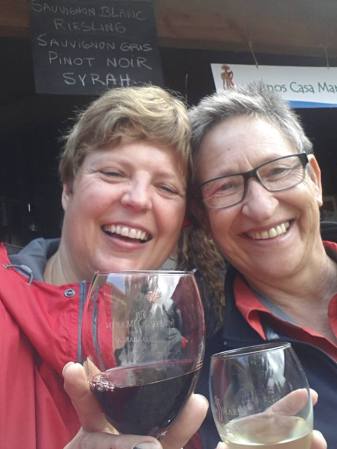The South American continent ends in a dramatic way. On the Pacific side the land disintegrates into small islands with beautiful fjords and narrow channels. We sailed through these on-board the Navimag ferry – a freight carrier that allows some passengers too – from Puerto Montt to Puerto Natales. It was unbelievably scenic, the sea sweet and calm – the exception rather than the rule in these parts – and the off-shore birding fantastic (we saw black browed albatross up close and personal a number of times). But what made the biggest impression on us is also the distinctive feature of Patagonia – the thousands of kilometres without human settlements. The population density of Patagonia is 1.5 persons per square kilometre, compared to the 14.4 persons per square kilometre of Argentina and 43 of South Africa.
The Torres del Paine massif, some 120 km north of Puerto Natales, must be one of the most impressive sights in the world and the Parque Nacional Torres del Paine is considered one of the best in South America. The colours is like something from a painting; the granite peaks topped with volcanic sediments and the snow-covered Andes in the back-ground reflects in the turquoise glacier-fed lakes while spring flowers in red and yellow cover the rocky slopes. You can’t make up that stuff.
The Torres del Paine national park borders Parque Nacional Los Glaciares in Argentina. The park’s name refers to the giant ice cap in the Andes range that feeds 47 large glaciers, of which 13 flow towards the Atlantic Ocean. The ice cap is the largest outside of Antarctica and Greenland. In other parts of the world, glaciers start at a height of at least 2,500m above mean sea level, but due to the size of the ice cap, these glaciers begin at only 1,500m , sliding down to 200m.The Perito Moreno glacier is the best known glacier. It is one of the most visited sights in the country, and rightly so. Thanks to the arrow head shape of the glacier and the wonderful walkways that the park authorities constructed on the opposite side of the peninsula, it is very accessible and to see and hear big chunks of ice falling into the lake below up close is truly awesome.
The northern section of the Los Glaciares is a hiking and climbing paradise. Even without trekking poles and crampons there are dozens of walks in the beechwood forest and the hills to enjoy, all with stunning views of lakes, glaciers and peaks like El Torre and Fitz Roy that has kept mountain climbers dreaming and scheming over the years. Of course, the crimson headed Magellanic Woodpecker and his beautifully crested female is a sight to behold!
The Atlantic coast is wild and windy and home to huge breeding communities of penguins, cormorants, terns, sea lions and seals. The land between the Andes and the coast is Patagonian heartland – empty, windblown, dry, bushy and beautiful. A part of our souls will be here always.





























